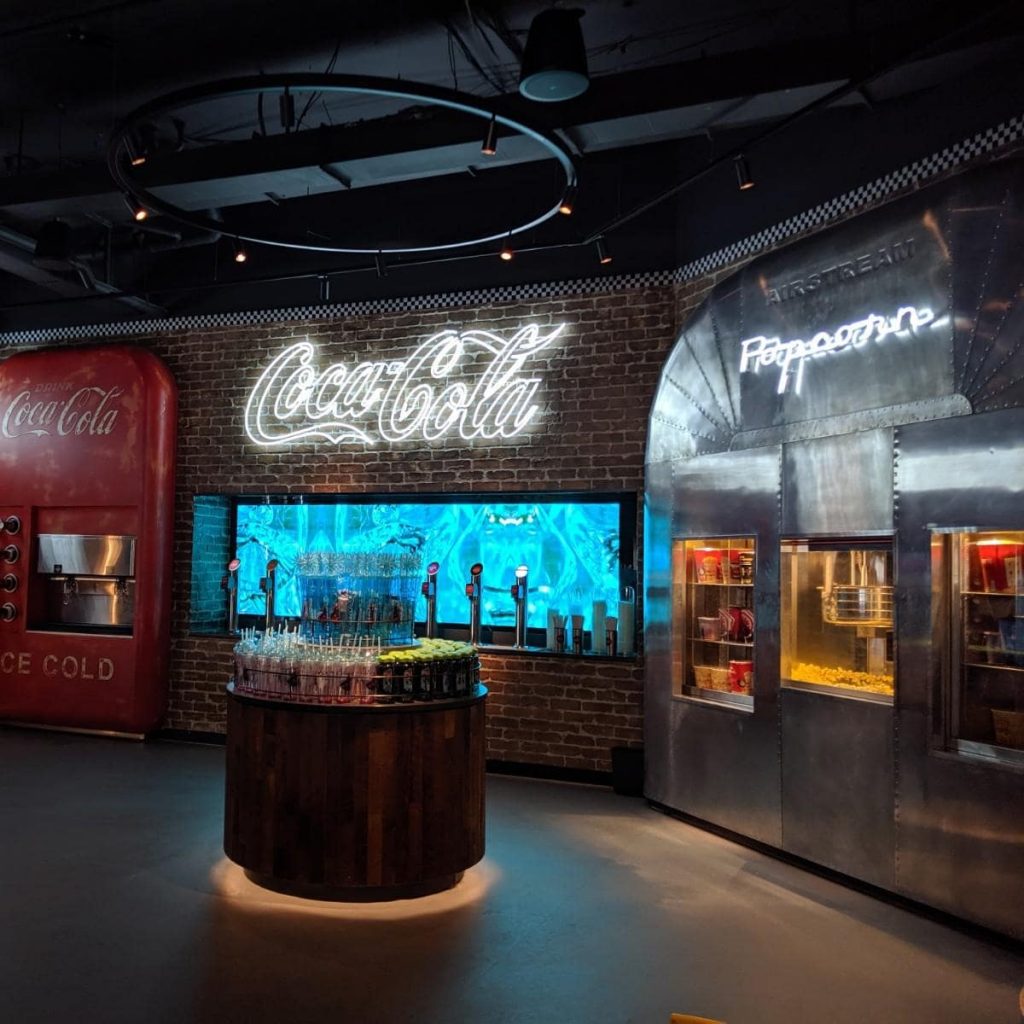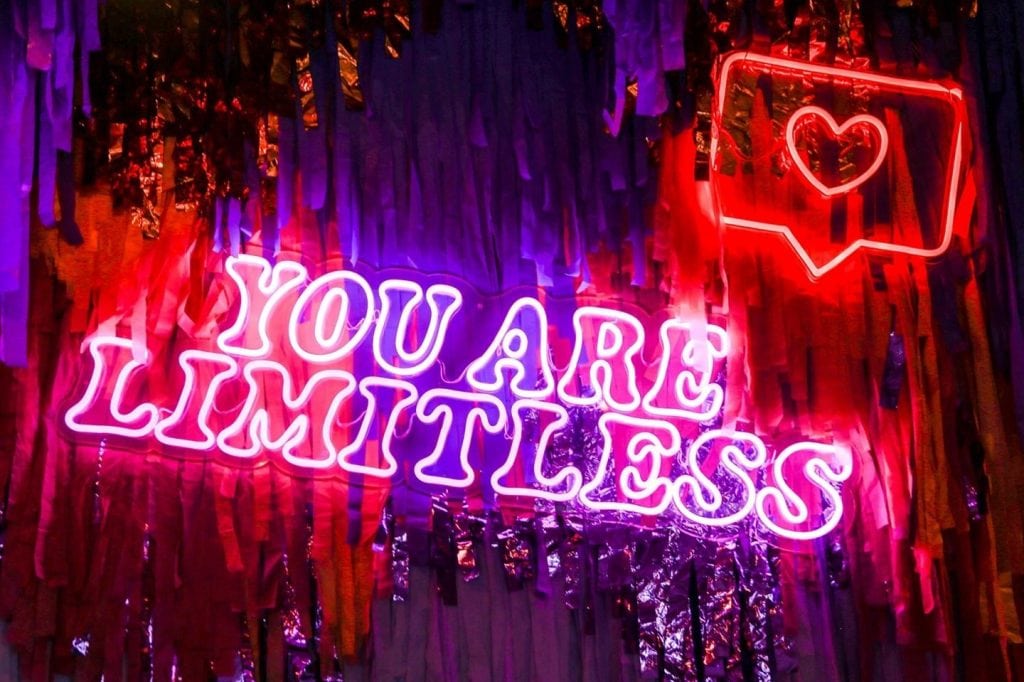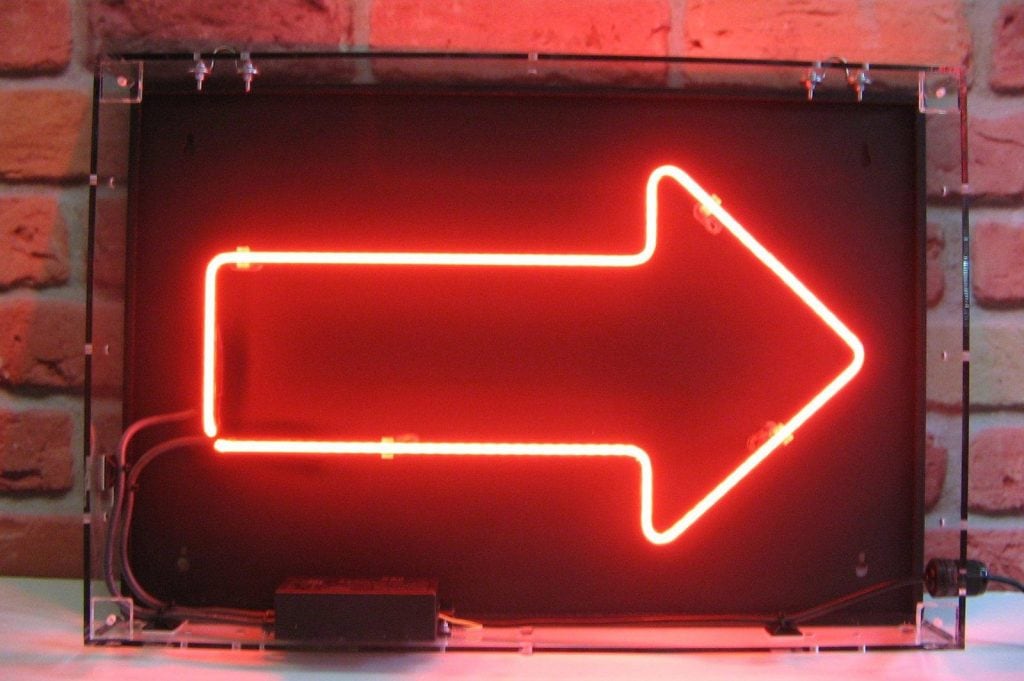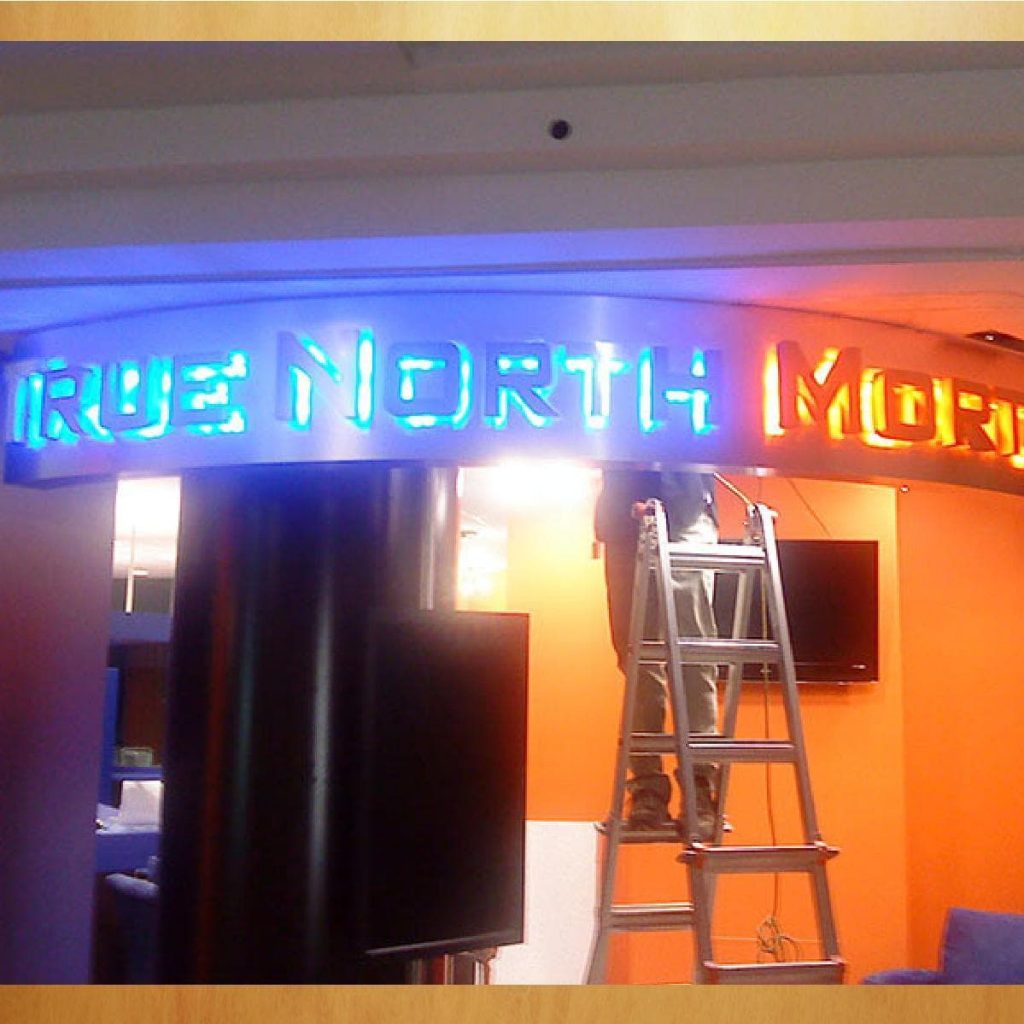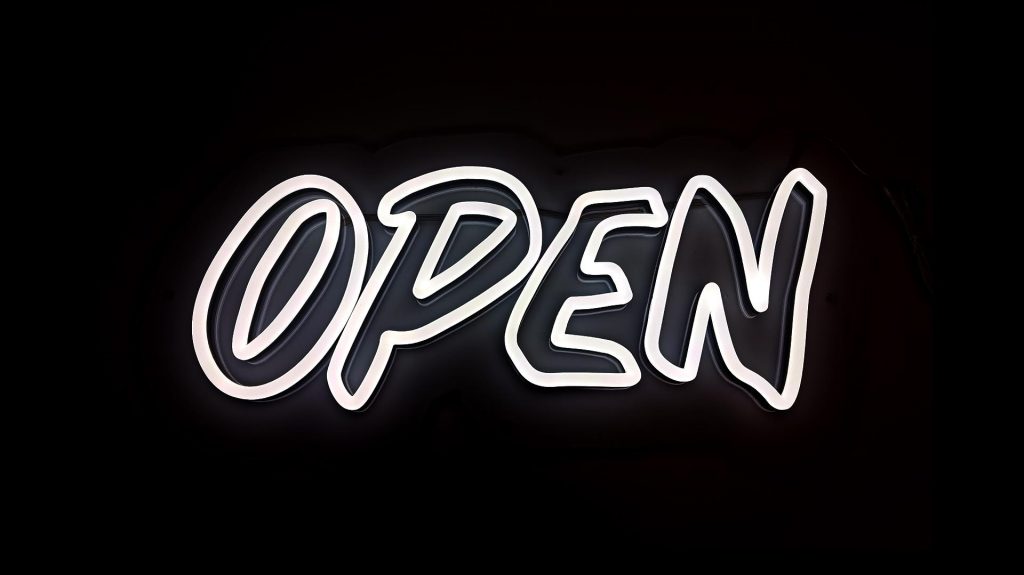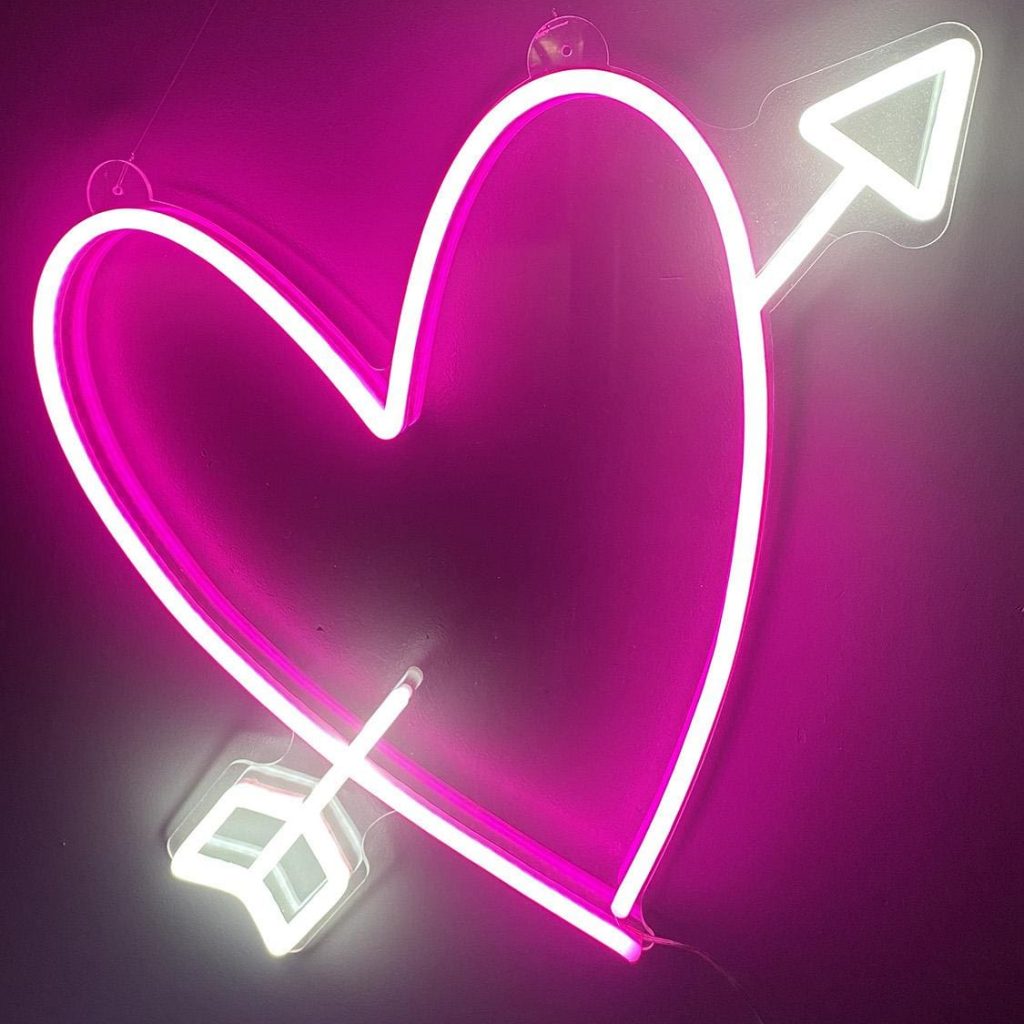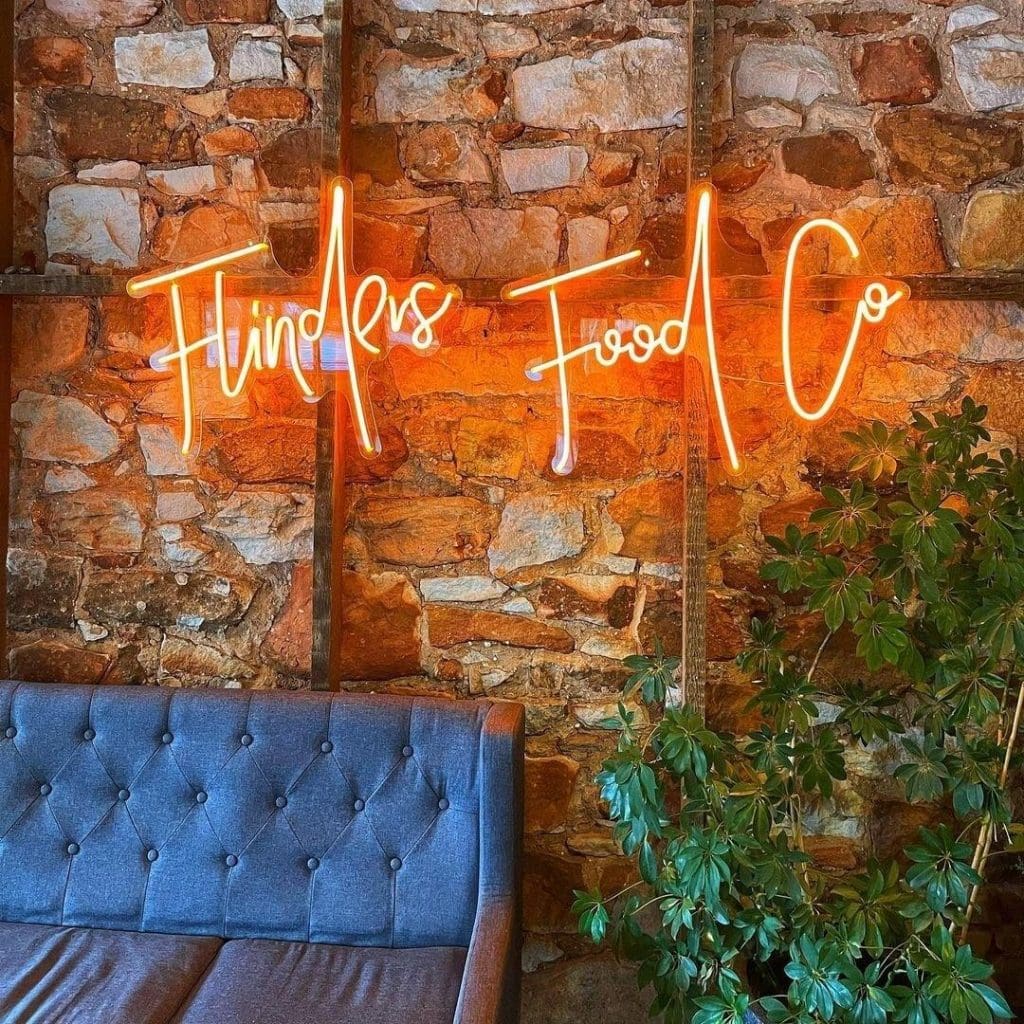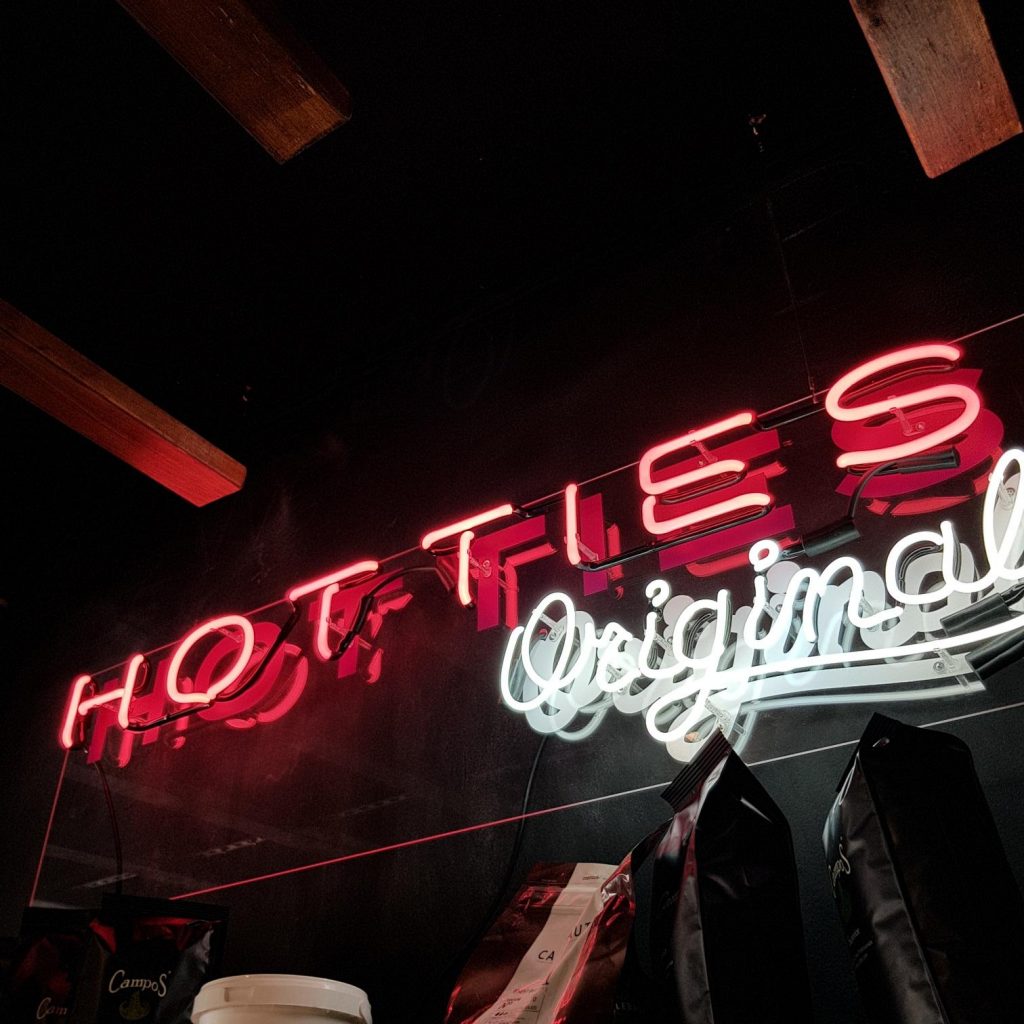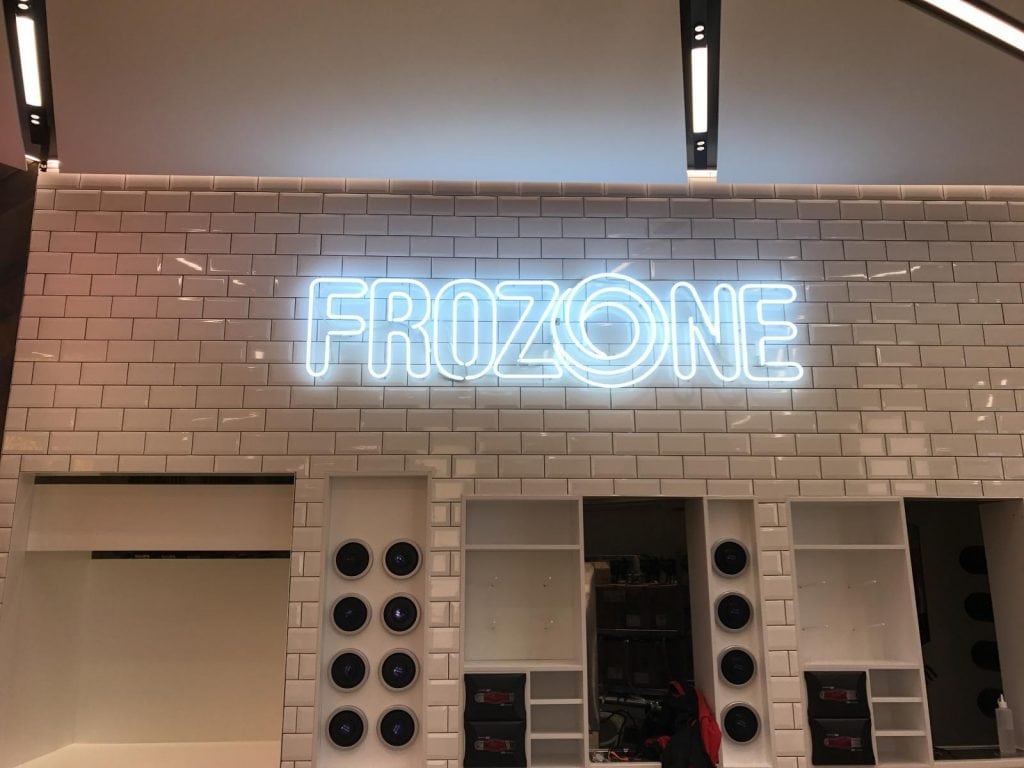When deciding between an LED neon sign and a glass neon sign, it's crucial to weigh the pros and cons of each to find the one that works best for you.
The traditional, brilliant glow of glass neon signs has been around for decades. Glass tubes are filled with neon gas, and the gas is then energised to form the bulbs. Glass neon signs are widely used in both commercial and residential settings due to their durability, longevity, and excellent visibility.
LED neon signs, on the other hand, are a more recent innovation that replaces the traditional neon gas with light-emitting diodes (LEDs). Energy-efficient, versatile, and less cumbersome than traditional glass neon signs, LED neon lights have taken the market by storm. They come in more hues, are cheaper, and require less effort to set up.
A glass neon sign or an LED neon sign might be chosen, depending on the preferences of the sign's owner, the available budget, and the requirements of the intended display location. You should give some thought to both possibilities and analyse their benefits and drawbacks before making a final choice.
Let's learn the distinctions between them to make an informed choice.
How Do Glass Neon Lights Work?
- Since the 1980s, glass neon has been widely used in the creation of eye-catching signs. Its one-of-a-kind, brilliant reddish-orange glow is the result of neon gas. Other coloured tube lights that are commonly referred to as "neon" really use fluorescent lighting or other gases, but this is often overlooked.
- In the creation of a traditional neon sign, glass tubes are filled with neon gas and then shaped and moulded into the desired form before being mounted on a glass board. Neon gas is a fantastic candidate for usage in neon lights due to its many beneficial properties, one of which being its status as a stable noble gas.
- Neon signs are made by filling glass tubes with neon gas and affixing electrodes to the tubes' ends. Neon gas ionises when an electric current is passed across the electrodes. This triggers a change to a lower energy state within the atoms, resulting in the emission of photons and so visible light.
- While glass neon signs are instantly identifiable for their distinctive glow, they may be costly to make and maintain, and they use far more energy than their LED counterparts. Even more so, glass neon signs are more delicate than LED neon signs and require special attention when installed and maintained.
How Do LED Neon Lights Work?
- The choice between glass neon and LED neon may seem like a tough one when you need a neon sign for your business or special occasion. Both have their own advantages and disadvantages, so choosing between them comes down to personal preference.
- Signs made of glass neon, also known as conventional neon signs, are created by filling glass tubes with neon gas and then moulding them into the desired form. In use since the 1980s, these signs are easily recognisable by the bright, reddish-orange glow they emit. They're not too fragile, but they can get hot and break if you don't treat them with care.
- LED neon signs, on the other hand, employ technology that is analogous to that of conventional glass neon but offers greater adaptability and personalisation. The LED neon lights have a cluster of LEDs set on a strip and come in a wide range of colours, from bright neon to muted tones. Plus, they're easier to dim, more eco-friendly, and can create strobe effects and other colour shifts.
- The design you desire, the place the sign will be exhibited, and the overall look you're going for are all factors to think about when picking between glass neon and LED neon signs. Both have the potential to be visually striking and can be utilised to make one-of-a-kind presentations, but the particulars of your project may dictate which one is the better choice.
Which Is Better: Glass Neon or LED Neon?
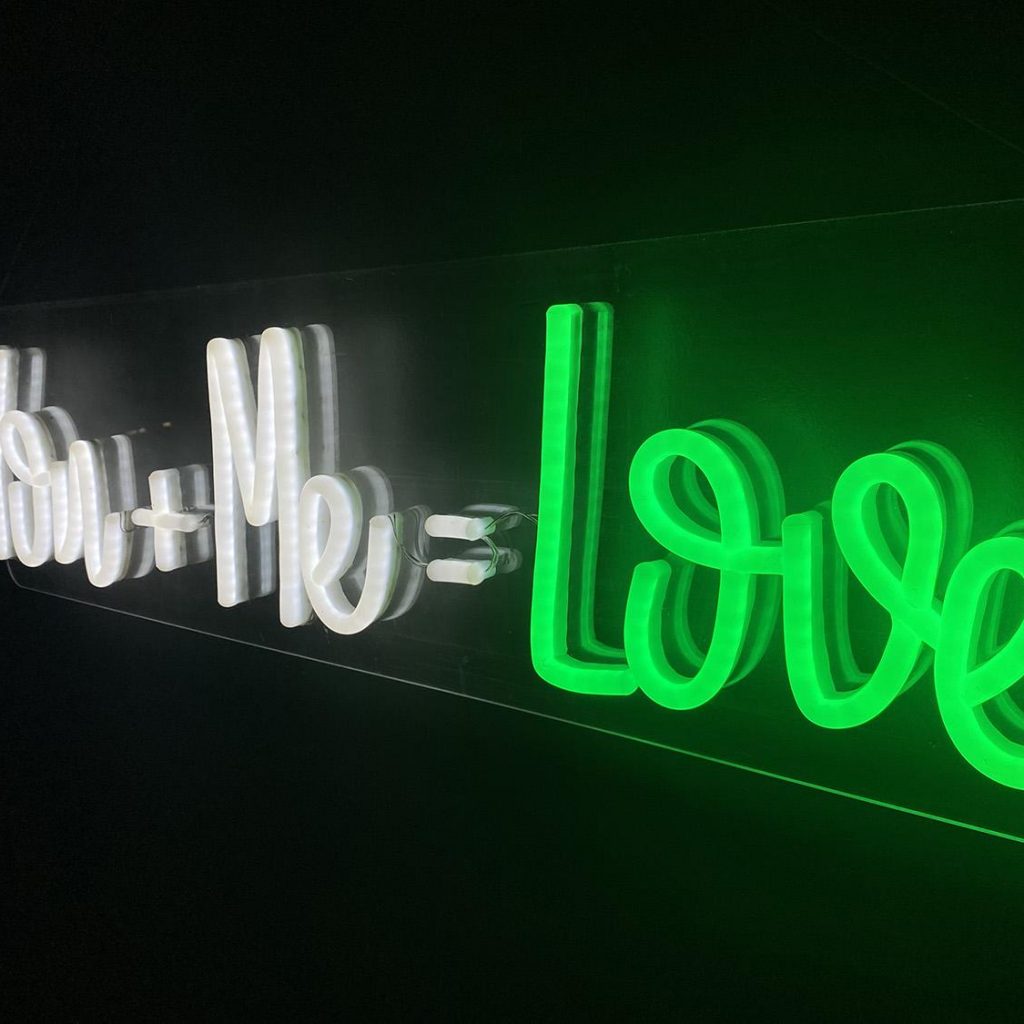
Both LED neon signs and more conventional glass neon signs are widely used to illuminate venues and stores. There are, nevertheless, important distinctions between them in terms of price, security, ease of installation and upkeep, need for electricity, brightness, and adaptability.
Cost
Although LED neon signs typically cost less than their glass neon counterparts, this can vary greatly based on the sign's size and complexity. Traditional neon signs involve high voltage and genuine glass, which makes them more fragile and requires particular disposal methods, so safety is also a factor. LED neon signs, on the other hand, can withstand high temperatures without breaking down and do not emit any toxic gases.
Installation
Installation is another major distinction; traditional neon signs must be kept in a safe place and handled with care, but LED neon signs may be put up just about everywhere. LED neon signs are more low-maintenance because they don't need their gas to be regularly replaced.
Power Consumption
Conventional neon signs are notoriously power-hungry and vulnerable to swings and outages, so it's crucial to think about how you'll handle their electricity needs. Instead, you can go for LED neon signs, which are not only brighter but also more resilient to power outages.
Brightness
While the warm glow of classic neon signs is comforting, the visibility of LED neon signs is enhanced from greater distances. LED neon signs are also more customizable than traditional neon in terms of colour palette and operability via remote.
Safety
Due to the high voltage and actual glass tubes used in neon signs, they are prone to breakage and require special disposal methods when they do. LEDs are fully risk-free due to their low heat output and high resistance to overheating. Mercury and phosphor, both of which can be dangerous to humans, are not present in LED signage.
Maintenance
In contrast to traditional neon signs, LED neon displays require almost no upkeep. Unlike classic glass neon signs, these LED-lit alternatives don't need gas to be constantly replenished and are protected from harm by a sturdy casing. Thus, they are a practical and long-lasting option for a wide range of lighting uses.
Accessibility
LED signs are an easy and cost-effective choice for businesses in need of a programmable, low-maintenance lighting system. LED signs, which come in a variety of colours and can be controlled remotely, are a great way to boost a company's brand recognition and visual appeal. LED signs save money in the long term because they don't need to be maintained as often as neon gas signs. Thanks to recent technological breakthroughs, LED signs are increasingly chosen by companies in need of a cutting-edge and dependable signage solution.
LED Neon Signage Is the Best Option for Art in the Home
There has been a rise in the number of homes incorporating neon signs into their decor. They were widely used in the past as a kind of advertising for businesses and industries.
However, times have changed and they are now permitted in your home. Neon signs can be placed anywhere, including bedrooms, nurseries, and even dining rooms. They can also be set up in the lounge, the entertainment area, or almost anywhere else.
These days, LED neon signs pose no health risks. If you need less light than normal, you can turn the brightness down on these fixtures. There's a wide spectrum of inviting tones to choose from for the bulbs.
This allows you to make a glow in the dark in any room. LED neon signs will not burn out or shatter like traditional neon alternatives. Therefore, you might employ it as a means of addressing your interior design issues.
When Holding Events, Should You Use Glass Signs or LED Signs?
The majority of today's population is accustomed to seeing event signage frequently. You couldn't ask for better methods of attracting interest. Beyond that, they enhance the mood of your indoor or outdoor venue. The occasion could be social or professional.
Some people use them during weddings, birthday parties, baby showers, and basically any other kind of social occasion you can think of right now. They add a special touch to your decor and help guests remember your venue.
Signs made with LED neon lights are more convenient to move around. Therefore, they are more cost-effective substitutes for conventional glass signage. Creative event signage can encourage people to ask questions and take part in the festivities. Using LED neon signs is a great method to get people interested in what you're doing.
It motivates people to interact with the event and your brand in general. Numerous people will take pictures of the sign and with it. Those who do so will be promoting you and your business to their own networks. These signs are inexpensive and easy to transport because of their minimal design. They're useful for consumers that need signs made for one-time occasions like parties, events, or trade fairs.
Which Is Better for Business: Glass Signs or LED Signs?
These signage have caused a craze amongst businesses. The vast majority have them and actively use them to promote their business and bring in new consumers. Needless to say, this is the only justification for employing them.
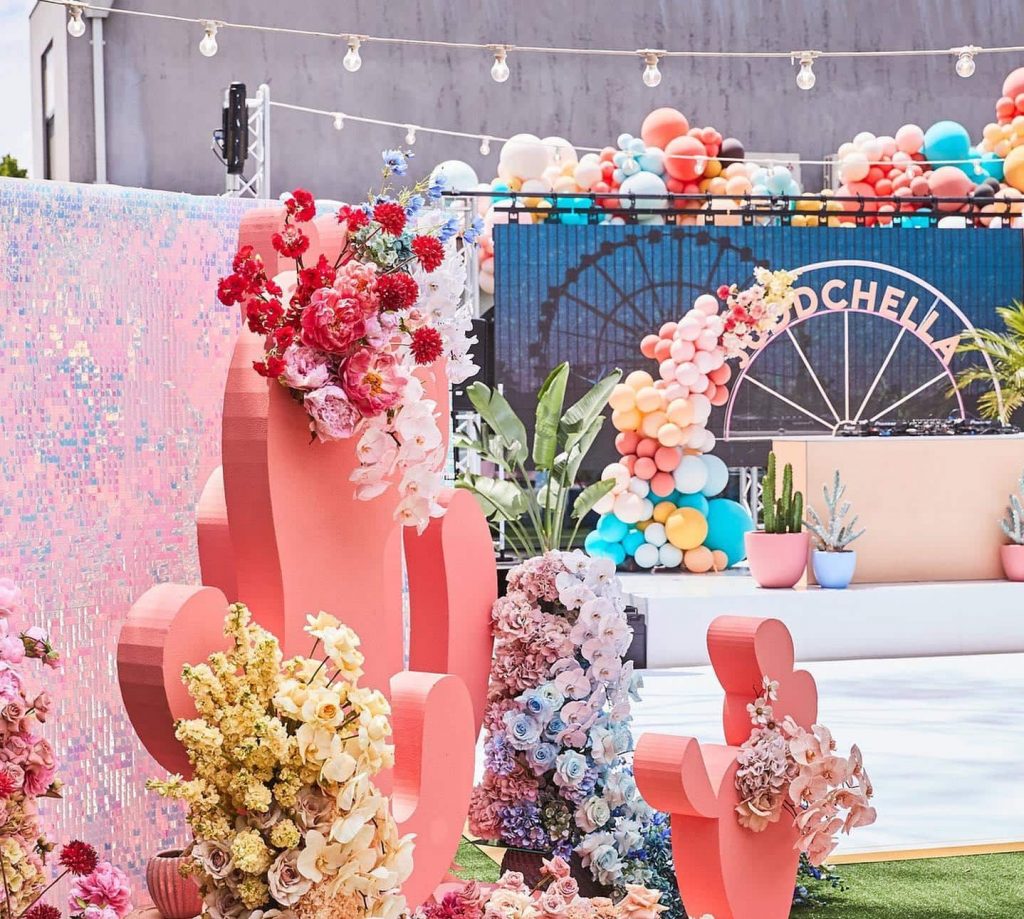
Additionally, they enhance the mood and atmosphere of the workplace. Light levels can also be increased with the use of neon signs. It's up to you to decide where in the office you want to set it up. There are those who put them in their windows.
Some people use them as company logos. Your goals will determine which sort of LED neon sign is best for you.
You might benefit from a more attractive and noticeable sign outside. The use of LEDs and glass-neon signs makes this a possibility. However, there are other factors that must be considered.
You need to think about things like cost, longevity, and security. Other considerations are its portability, durability, and low operating and maintenance costs.
The modern LED neon sign has replaced the traditional glass neon sign in terms of both appearance and brightness. Because of such, it has become a prefered choice among consumers.
There is much to think about before settling on the best option for your company. Considering, for instance, the size. LED neon signs, which are thinner than conventional neon signs, work well in front of brick and mortar businesses and cosy cafes.
Any company looking to save money on signage should look into switching to LED.
They have lower acquisition costs, fewer ongoing maintenance costs, and less reoccurring acquisition costs. In addition to reducing your carbon footprint, they also reduce your electricity costs.
Some business owners value adaptability beyond all else. LED neon signs continue to dominate despite this. It's feasible because of how adaptable they are. The technology behind LED sign bends has advanced to allow for greater individual expression.
That means you can use it to make whatever kind of symbol, logo, text, or design your heart desires. LED signs are still the best option for those that prioritise security. It's hard to overheat them or crack them.
Ultimately, there are benefits and drawbacks to both LED neon signs and classic glass neon signs, and the one that is ideal for you depends on your individual circumstances. The right neon light for you will depend on the task at hand, the available funds, and your particular taste.
Glass neon lights are a great option if you have a significant budget, your project will be very specific in scope (such as a set of signage), and you desire the retro neon light look. The rest of the lighting should be made up of LED neon light strips. They are easier to use, safer, cheaper, and more versatile. Go ahead and look through our selection to locate the perfect option for you right now.
Businesses interested in cutting costs without sacrificing originality in their signage should switch to LED neon signs. In order to reduce marketing costs, flexibility and exposure need not be compromised. Comparing LED signs to their neon counterparts reveals the former's many benefits, both in the short and long term.
Conclusion
Think about the advantages and disadvantages of both LED neon signs and traditional glass neon signs before making your final choice. As a result of their durability, longevity, and high visibility, glass neon signs are frequently used in both public and private spaces.
A more recent development, LED neon signs use light-emitting diodes in place of traditional neon gas (LEDs).
They are easier to install, cheaper, and offer a wider range of colour options. Electricity is produced by filling glass tubes with neon gas and connecting the tubes' ends with electrodes in glass neon lights.
When an electric current is run across electrodes in a neon arc lamp, the gas ionises, releasing photons and visible light. LED neon signs and glass neon signs each have their benefits and drawbacks, making the decision between them difficult.
While traditional glass neon signs are made by filling glass tubes with neon gas and shaping them into the desired shape, newer LED neon signs use technology that is similar to that of traditional glass neon but allows for greater customization and adaptability.
Both have the potential to be visually striking and can be used to make one-of-a-kind presentations, but which one is best for your project will depend on the specifics of your needs. When comparing the two, it's clear that there are significant gaps in key areas like cost, safety, ease of setup and upkeep, electricity requirements, luminosity, and versatility.
LED neon signs are rising in popularity because of their versatility. LED neon signs should be considered by any business looking to save money over traditional glass neon signs due to their lower maintenance costs, increased safety, lower initial investment, and increased adaptability. When put side-by-side with neon signs, LEDs are clearly superior in both the short and long term.
Content Summary
- When deciding between an LED neon sign and a glass neon sign, it's crucial to weigh the pros and cons of each to find the one that works best for you.
- A glass neon sign or an LED neon sign might be chosen, depending on the preferences of the sign's owner, the available budget, and the requirements of the intended display location.
- The choice between glass neon and LED neon may seem like a tough one when you need a neon sign for your business or special occasion.
- The design you desire, the place the sign will be exhibited, and the overall look you're going for are all factors to think about when picking between glass neon and LED neon signs.
- Both LED neon signs and more conventional glass neon signs are widely used to illuminate venues and stores.
- There are, nevertheless, important distinctions between them in terms of price, security, ease of installation and upkeep, need for electricity, brightness, and adaptability.
- LED neon signs are more low-maintenance because they don't need their gas to be regularly replaced.
- Instead, you can go for LED neon signs, which are not only brighter but also more resilient to power outages.
- While the warm glow of classic neon signs is comforting, the visibility of LED neon signs is enhanced from greater distances.
- Maintenance In contrast to traditional neon signs, LED neon displays require almost no upkeep.
- LED signs are an easy and cost-effective choice for businesses in need of a programmable, low-maintenance lighting system.
- However, times have changed and they are now permitted in your home.
- These days, LED neon signs pose no health risks.
- Therefore, you might employ it as a means of addressing your interior design issues.
- The majority of today's population is accustomed to seeing event signage frequently.
- Signs made with LED neon lights are more convenient to move around.
- Creative event signage can encourage people to ask questions and take part in the festivities.
- Using LED neon signs is a great method to get people interested in what you're doing.
- Light levels can also be increased with the use of neon signs.
- It's up to you to decide where in the office you want to set it up.
- Your goals will determine which sort of LED neon sign is best for you.
- There is much to think about before settling on the best option for your company.
- Considering, for instance, the size.
- Any company looking to save money on signage should look into switching to LED.
- LED signs are still the best option for those that prioritise security.
- Ultimately, there are benefits and drawbacks to both LED neon signs and classic glass neon signs, and the one that is ideal for you depends on your individual circumstances.
- The right neon light for you will depend on the task at hand, the available funds, and your particular taste.
- Glass neon lights are a great option if you have a significant budget, your project will be very specific in scope (such as a set of signage), and you desire the retro neon light look.
- The rest of the lighting should be made up of LED neon light strips.
- Businesses interested in cutting costs without sacrificing originality in their signage should switch to LED neon signs.
- In order to reduce marketing costs, flexibility and exposure need not be compromised.
- Comparing LED signs to their neon counterparts reveals the former's many benefits, both in the short and long term.
FAQs About LED Neon Signs
While the average lifespan of a neon sign is eight to fifteen years, many of them last much longer than that. A sign's lifespan can be shortened by leaving it on for extended periods of time, and it also increases the risk of overheating and electrical surge damage
Neon signs, which were common from the 1920s to the 1960s and again in the 1980s, require them to create the bright, eye-catching displays of colour that are their hallmark.
The neon glass tubes in the metal conduits are linked together by high-voltage electrical wires. When temperatures get too high, the wires powering the sign can melt, rendering it useless in whole or in part.
Believe it or not, no electricity is required here, despite the fact that many people think they must plug it in. When excited by either electricity or ultraviolet light, gas molecules release electrons, causing the gas to glow.
Neon signs are stunning to behold, but they pose a danger if they aren't regularly serviced. Injury from shattered glass, electric shock, or a fire hazard are all examples of the dangers that could arise.


